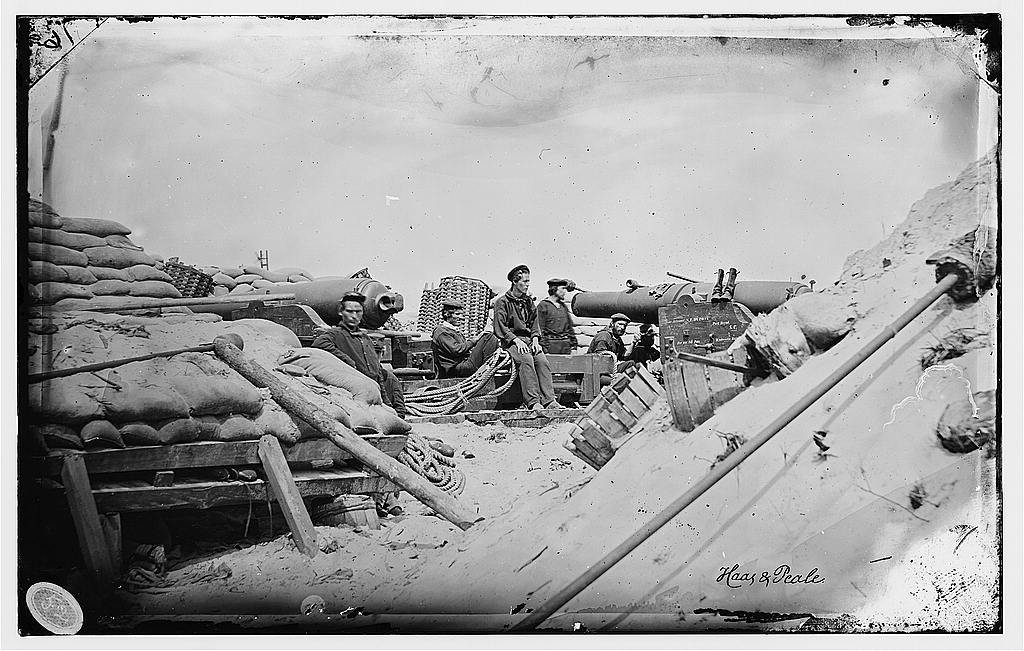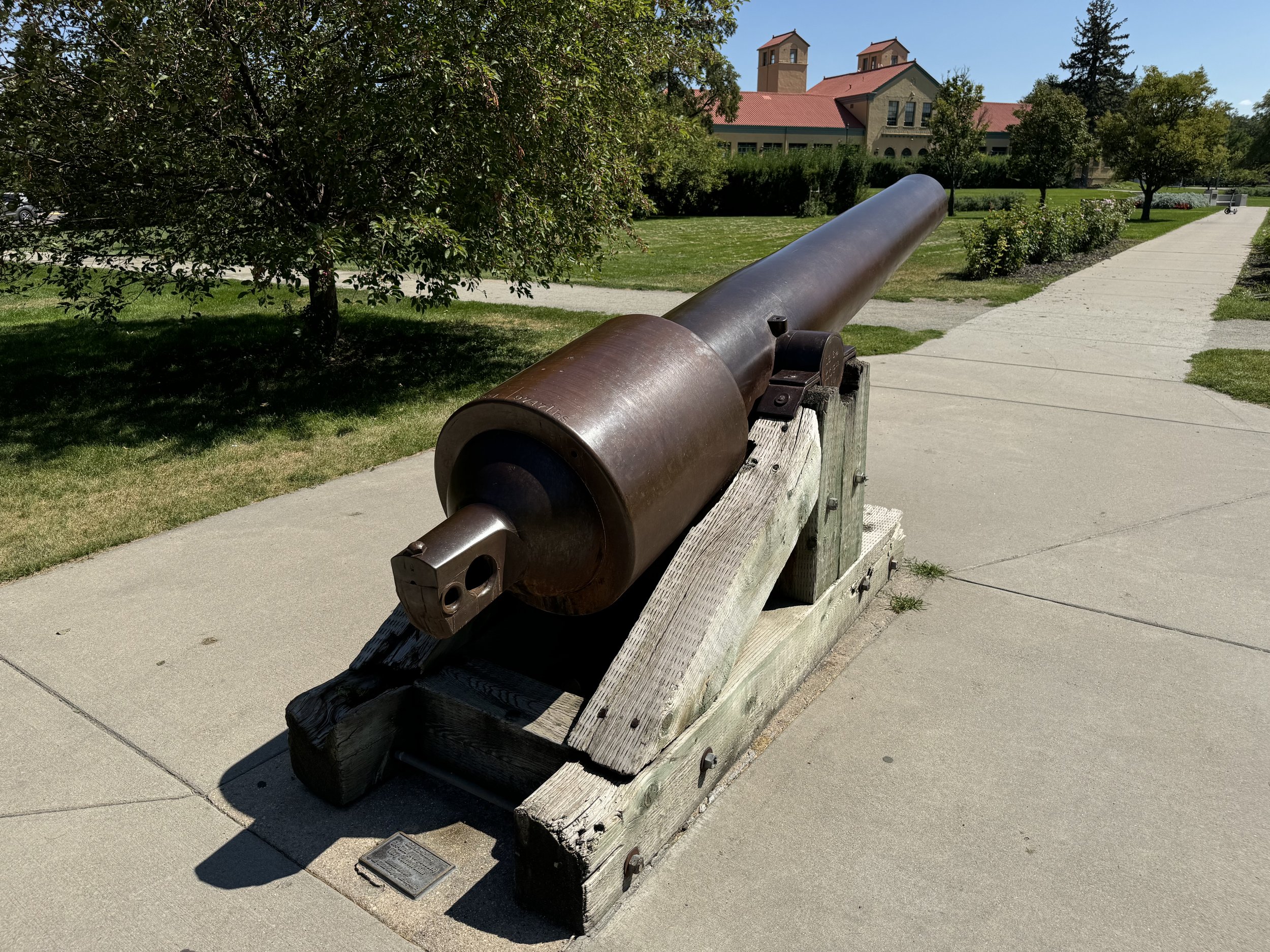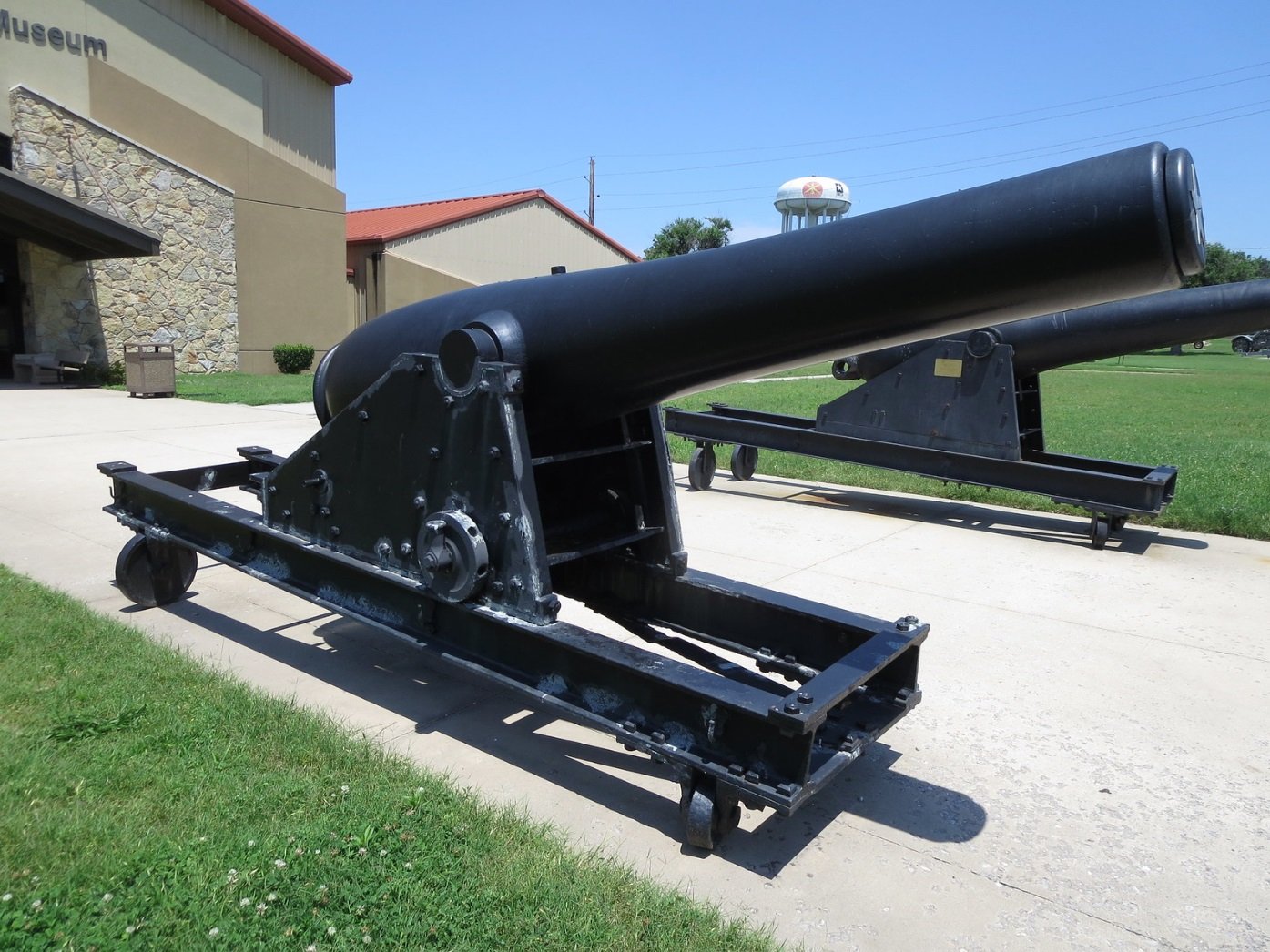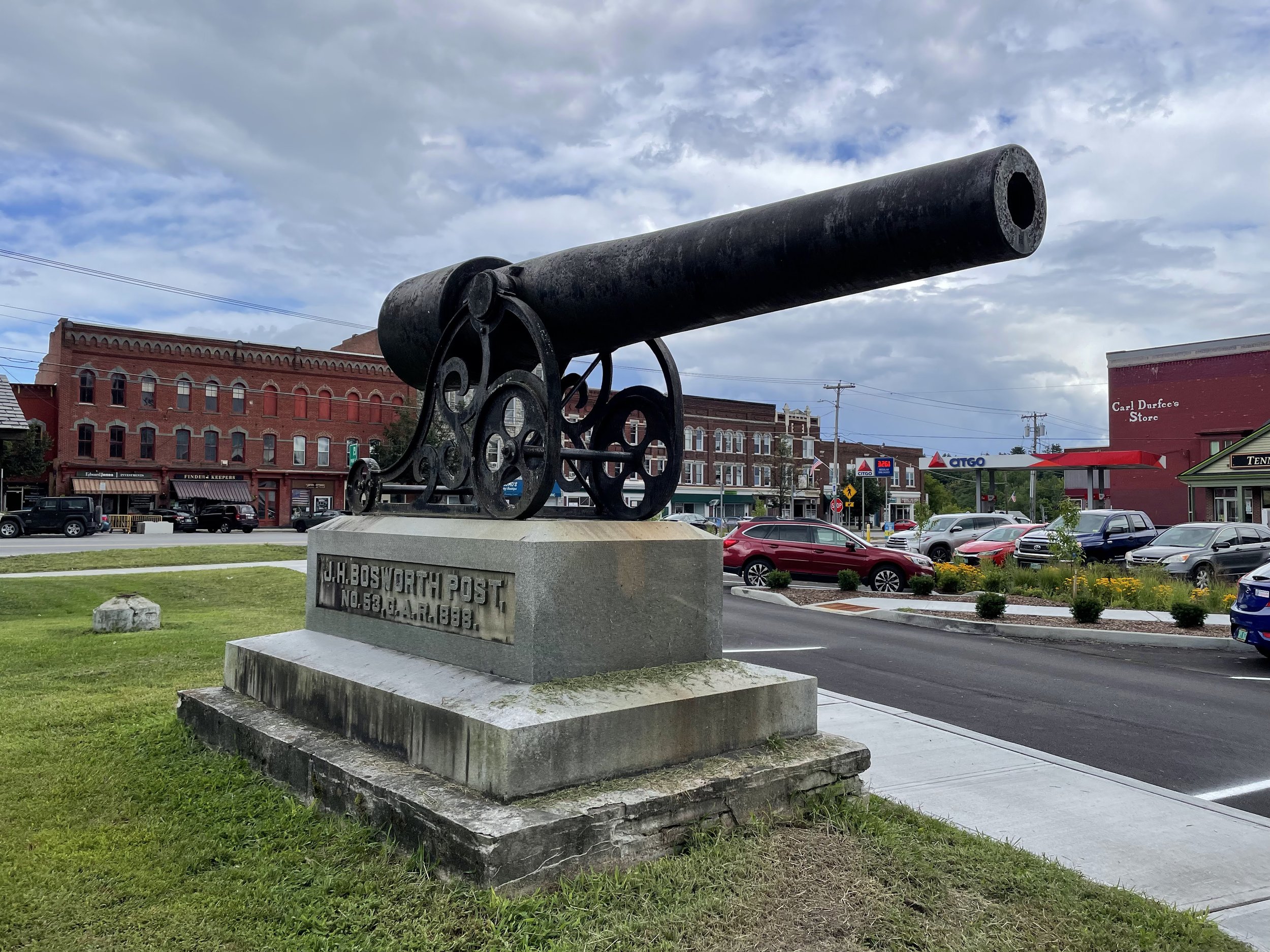
Dictator: The 13-Inch Mortar of Petersburg
In 1864 a 13-Inch Seacoast Mortar, Pattern 1861, was used by the United States Army in the siege of Petersburg. The mortar was mounted on a railcar - named the Petersburg Express - and used against Confederate fortifications. The fame of this heavy mortar may be greater than it's impact upon the siege. Whether the "Dictator" is among the approximately thirty 13-Inch Mortars which survive to the present is a matter of conjecture.

The Whitworth Rifles of the Naval Battery on Morris Island
Four 5-Inch Whitworth Muzzle Loading Rifles were captured by the US Navy when the Blockade Runner S.S. Princess Royal was captured by USS Unadilla off of Charleston. Two of the four survive. One at West Point bearing a plaque stating that it was used on Morris Island. The other is at the Washington Navy Yard where it may have been tested in the experimental battery there.

30-Pounder Parrott Rifle at Petersburg
US Army 30-Pounder Parrott Rifle Number 227 (manufactured in 1863 at the West Point Foundry, 4,155 Pounds as manufactured) is displayed at Petersburg National Battlefield.

The 8-Inch Siege Howitzer of USS Pawnee
Two 8-Inch Siege Howitzers, Model 1841 (Olmstead et. al say "Pattern 1840") at the Washington Navy Yard.
Both were used in an attempted ambush of USS Marblehead on the Stono River on Christmas Day, 1863. One was subsequently carried as a pet aboard USS Pawnee.

The Cannons of the North Carolina State Capitol
A number of statues and monuments dot the grounds of the historic North Carolina State Capitol (built 1833-1840) in Raleigh, North Carolina. This post looks at the cannons which flank those statues.
The monuments cannons covered in this post are:
The Statue of George Washington and the Edenton Cannons
The US Army 8-Inch Siege Mortars and the Statue of North Carolina Presidents
The 4-Inch Fawcett and Preston Rifle
The 32-Pounders of 57 Hundredweight now at Fort Fisher

The French 36-Pounders of Fort McHenry
A French 36-Pounder, representing those taken from the French ship of the line Éole and used to arm Fort McHenry during the war of 1812, is displayed at Fort McHenry. Éole reached Annapolis after being dismasted in a storm in 1806. This French battleship saw no further service, and it was broken up in Maryland several years later.

The 6.4-Inch Parrott Rifles of Greenville, South Carolina
Two 6.4-Inch Parrott Rifles (also called 100-Pounder Parrott Rifles) are displayed in Greenville, South Carolina beside a Confederate Monument. Despite flanking a Confederate Monument, they were produced for the US Army, and cannons with “neighboring” serial numbers are known to have been used to bombard Confederate positions near Charleston. It is possible that these two cannons saw similar service.

The Cannons of Fort Macon
Fort Macon on Bogue Banks in North Carolina is a beautifully preserved and restored Third System fort which has been operated as a state park since 1924. Over the last decades the Friends of Fort Macon have raised money to rearm the fort and in so doing has made a very significant contribution to the historical interpretation of the fort. For those who are interested in American Seacoast Artillery, Fort Macon is a fascinating site to visit.

“Report on Rifled Guns” - 1865 Report on Parrott Rifles by the US Navy Bureau of Ordnance
After 5 US Navy Parrott Rifles failed causing some 45 casualties during the First Battle of Fort Fisher in December of 1865, the Bureau of Ordnance was tasked with determining the cause of the failures and whether Parrott Rifles continued to be suitable for use by the United States Navy. The report is transcribed in this post.

The 9-Inch Dahlgren and 8-Inch Rodman at Fort Sill
The US Army Artillery Museum at Fort Sill offers the unique opportunity to directly compare an 8-Inch Rodman to an 9-Inch Dahlgren. In presenting these two cannon side by side, the visitor to the museum is able to see the approach of both the US Navy and the US Army to produce shell guns capable of also firing solid shot. The Photos in this post were taken by Flickr User “rcaustintx” in 2019. They are used with his permission. Many, many thanks!

30-Pounder US Army Parrott Rifles at Fort Pulaski
US Army 30-Pounder Parrott Rifles were successfully used in the Siege of Fort Pulaski in April of 1862. Several 30-Pounder Parrott Rifles (also called 4.2-Inch Parrotts) are displayed at the Fort. The US Army Model is both longer and heavier than the Navy 30-Pounder.

20-Inch Rodman of Fort Hamilton, New York
A 20-Inch Rodman Gun is displayed at Fort Hamilton in Brooklyn, New York. This type was the largest cannon manufactured by the United States during the American Civil War. These photos were provided by another individual and are used with permission.

The Naval Cannons of Fort McClary, Maine
Three US Navy cannons are displayed at Fort McClary near Kittery, Maine: a 9-Inch Dahlgren Shell Gun, a Bureau of Ordnance 8-Inch Shell Gun of 6,500 Pounds, and a 32-Pounder of 57 Hundredweight. Fort McClary shows several stages of US Army seacoast fortifications and is beautifully situated overlooking Portsmouth Harbor.

The 6.4-Inch Parrott Rifle of Fair Haven, Vermont
A 6.4-Inch (or 100-Pounder) Parrott Rifle is displayed on a pedestal in Fair Haven, Vermont.

10-Inch Rodman of Middlebury, Vermont
A 10-Inch Rodman is displayed in Middlebury, Vermont.

8-Inch Parrott Rifle in Westerly, Rhode Island
An 8-Inch Parrott Rilfe is displayed outside the old Armory in Westerly, Rhode Island.

6.4-Inch Parrott Rifle in Bristol, Vermont
A 6.4-Inch (or 100-Pounder) Parrott Rifle is displayed on the town square in Bristol, Vermont.

The Rodmans of Fort McHenry
Displayed at Fort McHenry near Baltimore, Maryland are three types of Rodman guns: 8-Inch Smoothbores, 8-Inch Rifles converted in the 1870s from 10-Inch Smoothbores, and 15-Inch Smoothbores. Taken together this is an impressive display of the Rodman type gun of the US Army during and after the American Civil War.

The Citadel’s Cannons
Displayed on the campus of The Citadel in Charleston, South Carolina are two 2.9-Inch Parrott Rifles, two Model 1841 6-Pounders, a 3.3-Inch Parrott Rifle, and a 7-Inch Brooke Rifle.

3-Inch Ordnance Rifle at Fort Monroe
A US Army 3-Inch Ordnance Rifle is displayed at Fort Monroe in Virginia.